Thomas Gibbins bought a surplus military shelter and used his decades of commercial boat and pleasure craft design experience to transform it into an overland-ready truck camper. His story and camper are truly riveting.
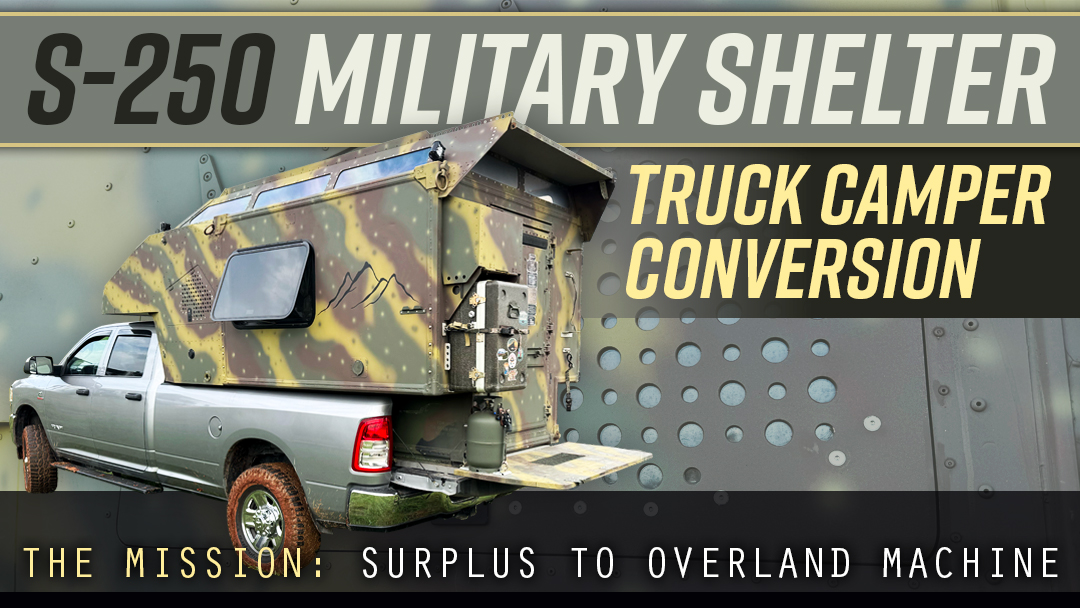
At Overland Expo East last year, we came across a rig that appeared to be half truck camper and half tank—right down to the metal, rivets, and camo. When we talked to the owner, we discovered how apt our first impressions had been. It’s not exactly a tank, but it’s definitely US military, and unlike anything we’d seen before.
After formally introducing ourselves, we asked more pointed questions and requested permission to photograph the unit inside and out. Lucky for us, Thomas Gibbins welcomed our enthusiasm and agreed to help us with an article.
The more we learned about his build, the more interesting it became. Thomas explained that it started as an S-250; a lightweight, mobile, and multi-purpose military shelter made from high-strength aluminum alloy extrusions and bonded polyurethane foam core and aluminum skin. The military primarily uses them to house communications equipment and their operators.
Thomas bought the S-250 as surplus and transformed it into a lightweight, multi-purpose civilian camper designed to go off-road, off-grid. Part of his transformation adding a cabover and greatly enhancing the storage and functionality of the base unit. He and his wife then used the S-250 to travel across the US, Canada, and Alaska.
We later corresponded with Thomas to get deeper into the details behind his S-250 camper conversion.
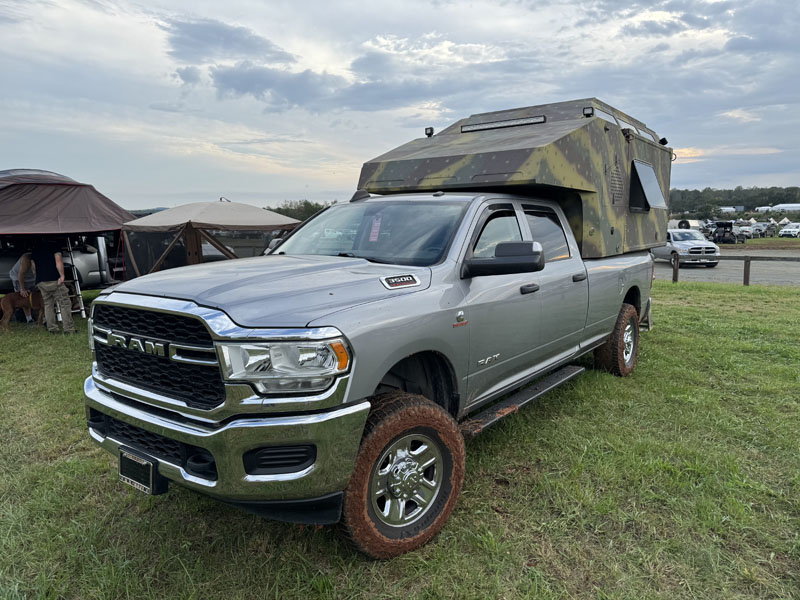
Before we talk about your camper, tell us what a S-250 communications shelter is, and what it’s used for.
An S-250 Communications Shelter is an enclosed military box that can be configured in numerous ways for various radio communications and monitoring needs. These boxes have been used by the U.S. Military for many years, going back to Vietnam.
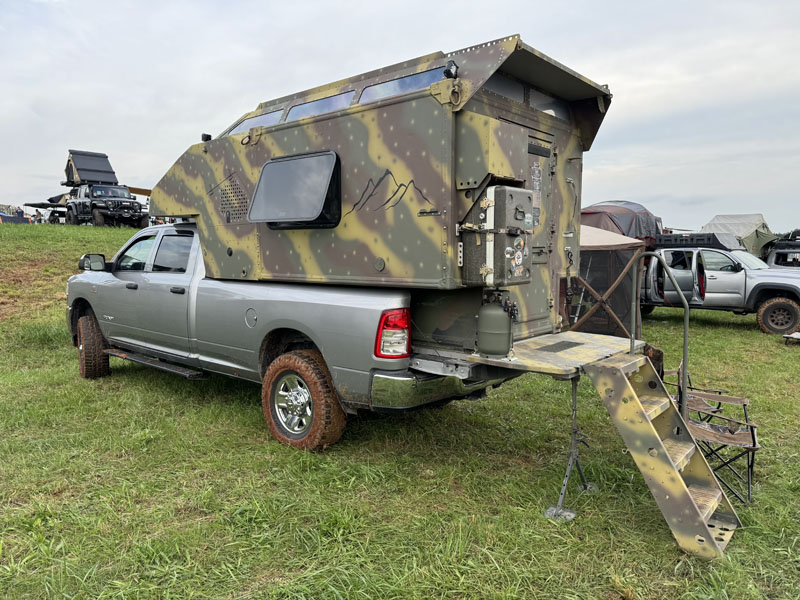
Where did you get the idea to make a truck camper out of an S-250 communications shelter?
My wife and I had been planning a trip to Alaska and wanted the ability to live off-grid for an entire summer. We had previously dragged our 23-foot travel trailer across the US, and we vowed to never do that again. It limited everything we wanted to do. It was also extremely expensive because we had to stay in RV parks and around civilization.
We had looked at various options for truck campers but, when we saw these shelters at a military surplus auction, we were intrigued and started exploring the possibility of purchasing one. As we accidentally passed a military surplus yard, I spotted an S-250 shelter in the back of the field. I stopped, struck a deal with the owner, and started doing the research for the conversion.
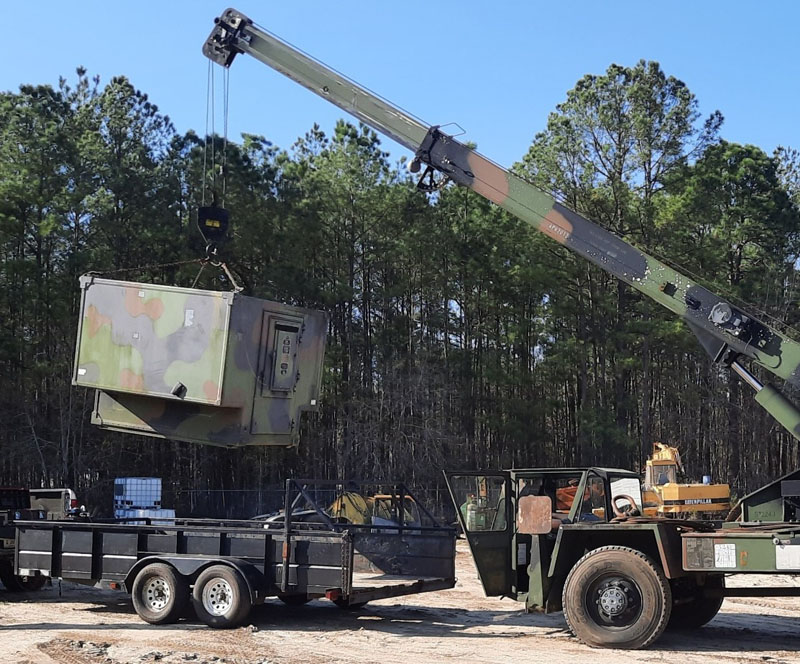
How much did it cost?
The cost varies upon the condition. Usually, they’re around $2,000. Mine was in exceptional condition. I have seen them for sale at military auctions.
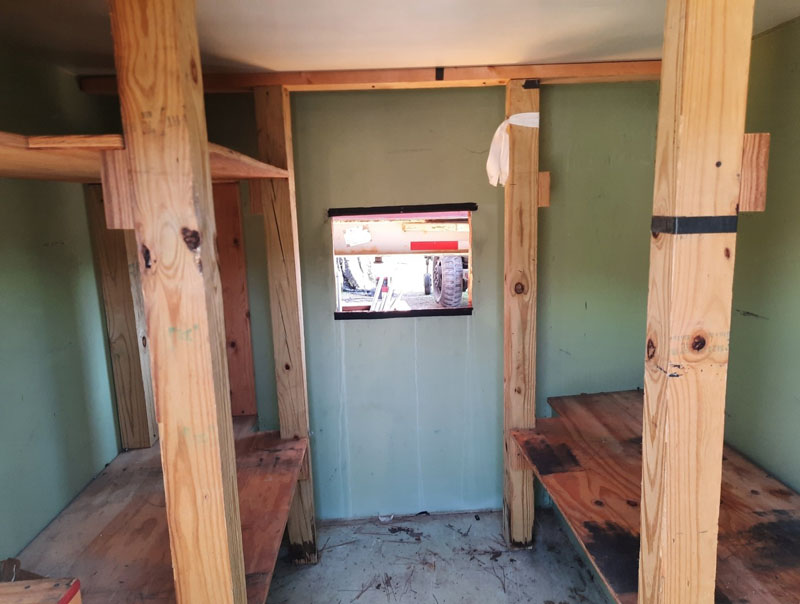
What kind of background do you have that gave you the skills to do this?
My background is in commercial boat and pleasure craft building. I have also built homes, furniture, pergolas, and most anything that can be built with wood or aluminum.
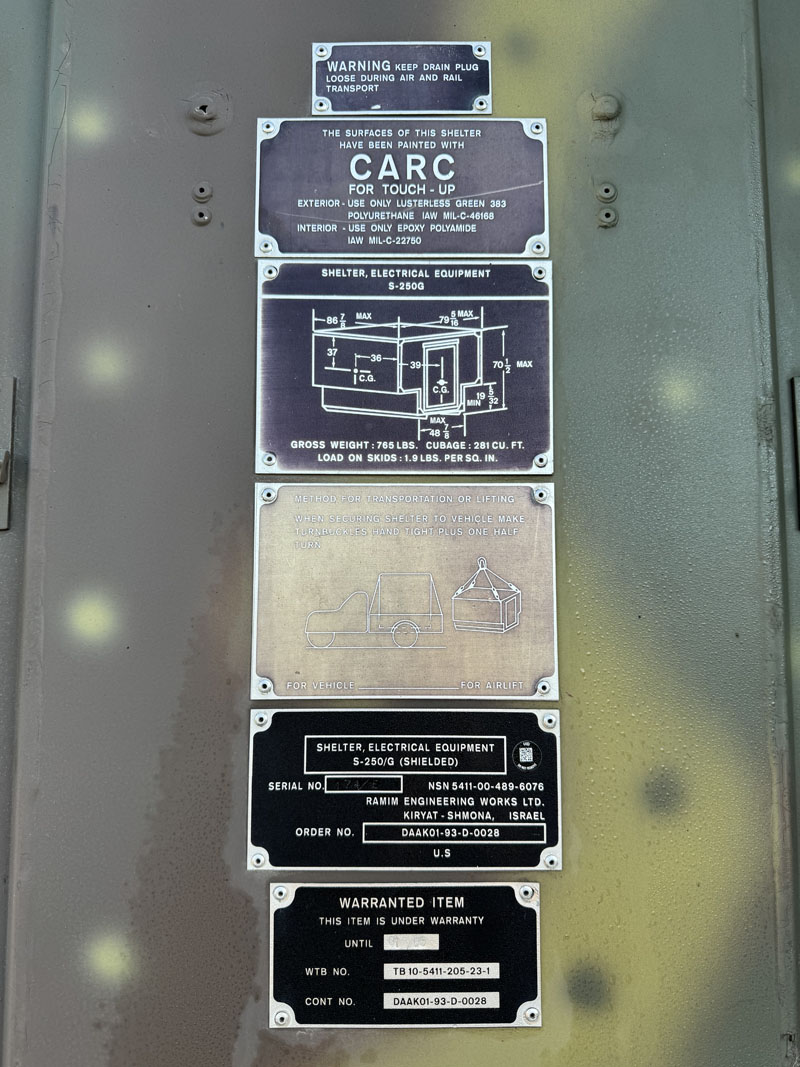
How did you design the camper?
I have experience in drafting, so I designed and drafted the build myself. I am a naval architect and marine engineer and worked in that field for many years in my own company.
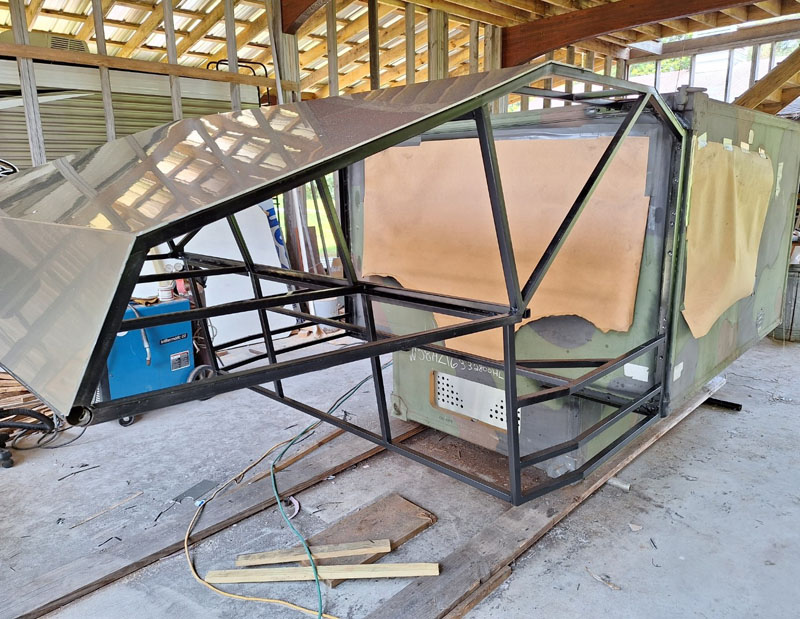
Once you had the S-250 in hand, how did you transform it into a truck camper?
My first concern was to make the S-250 mechanically and structurally sound so that I could attach it to my truck safely. I utilized my truck’s puck system, which is normally used for fifth wheel trailer hitches.
Then I measured and profiled out the shelter to aesthetically fit my truck using full-sized patterns. I used jigsaws, grinders, and drills to cut out the holes where the modifications would go.
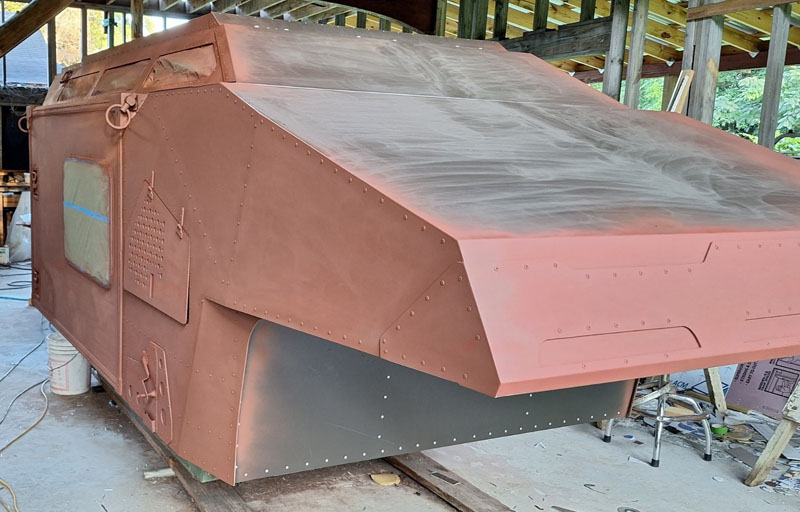
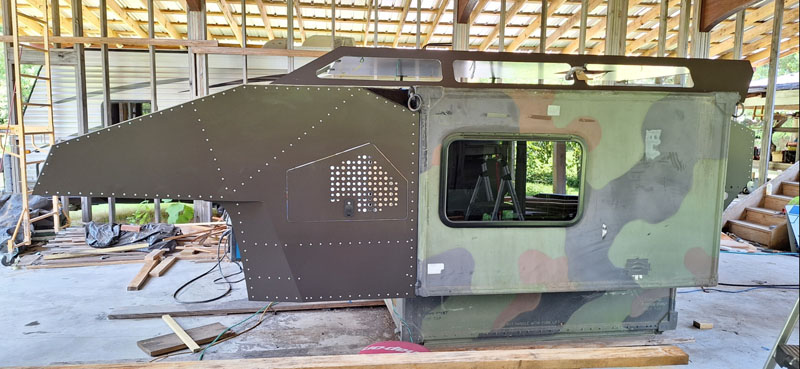
I built a structural steel cage to attach to the shelter. After that, I used ACM (aluminum cored material) to sheathe the structure. All the while, I took into consideration all the mechanical components and placements in the interior.
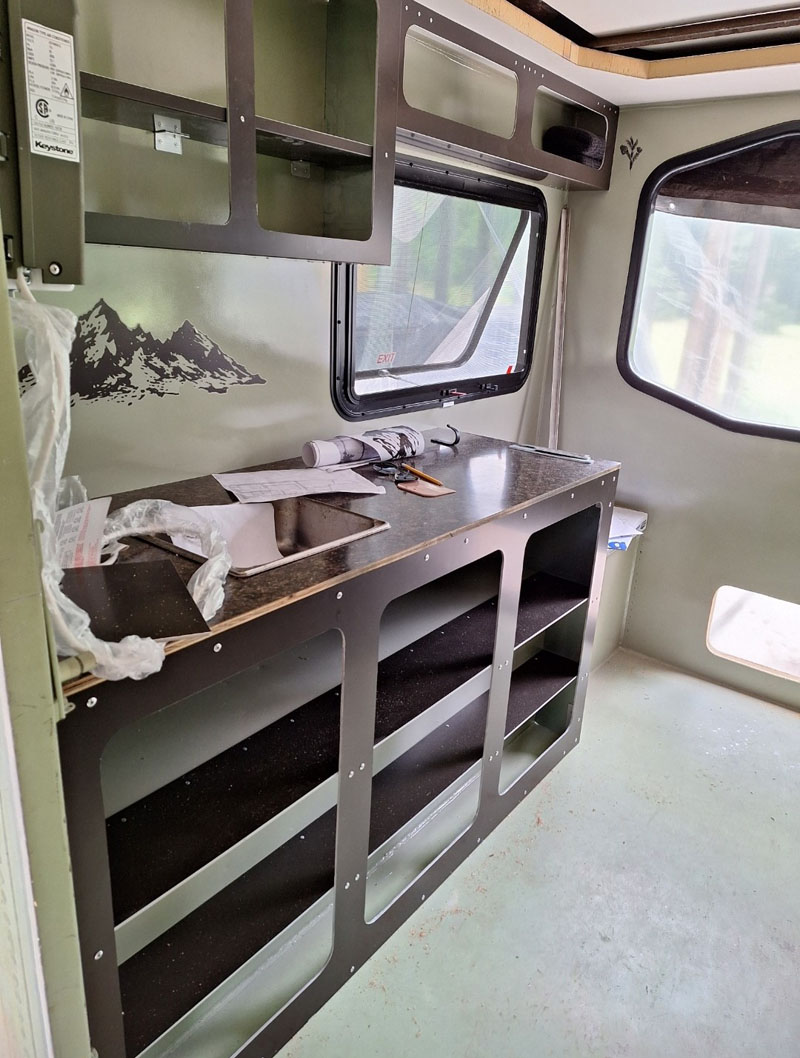
What is still original and what did you remove and/or change?
The shelter is original with the exception of the cutouts for the windows and a hole for the air conditioner. There’s also a cutout for the roof to provide standing room.
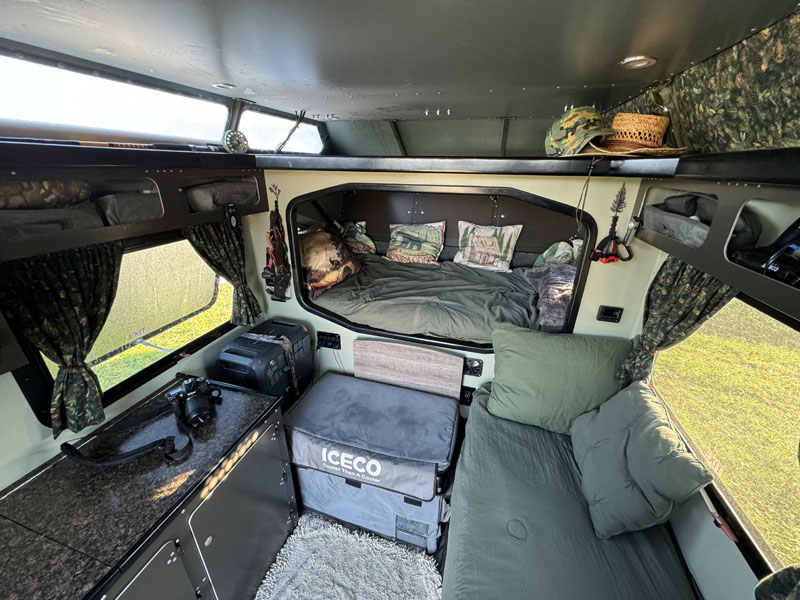
What did you add to the communications shelter to make it a comfortable camper?
I installed two egress windows for safety and light. In addition, I added windows to the tropical roof for light. In the front, I opened up a large area for access to a bunk and cabover storage.
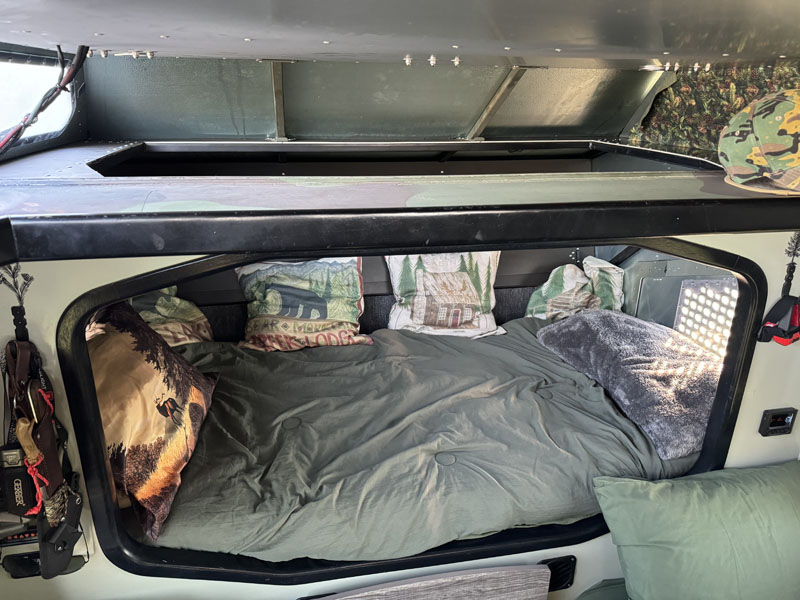
Under the bunk is the compartment for lithium batteries, an inverter, a diesel heater, all the electrical components, and storage. Under all this is a 110-gallon transfer tank for diesel fuel. This gives me a total fuel capacity of 160 gallons and a fresh water capacity of about 16 gallons.
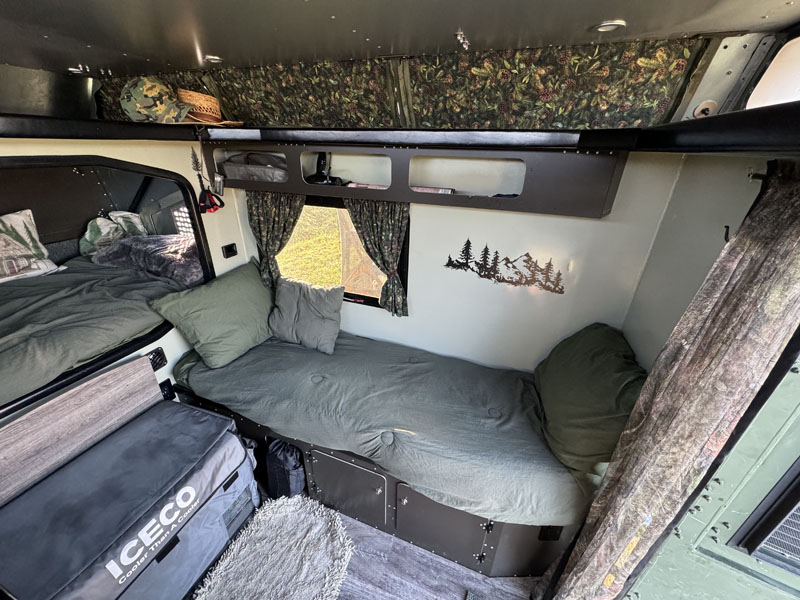
In the cabin is a secondary bunk that is used as a couch during the day.
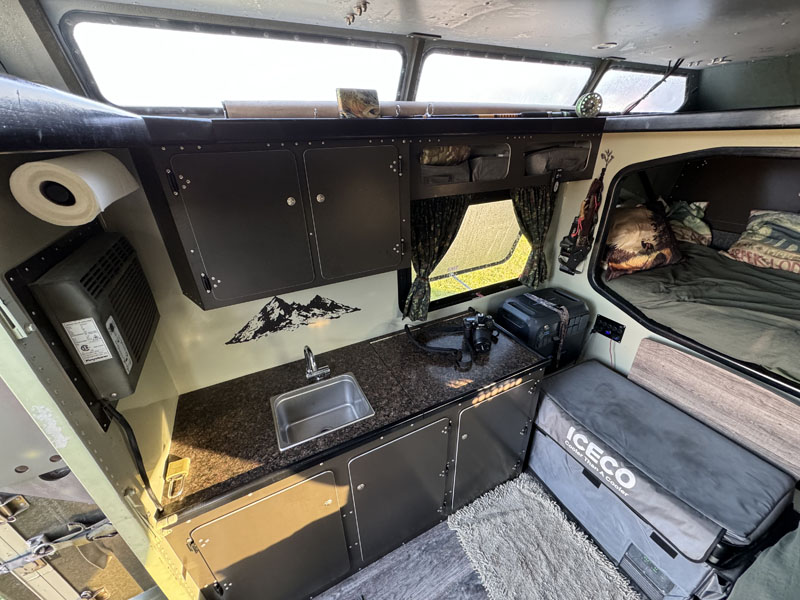
I installed a kitchen on the opposite wall of the couch. The kitchen includes a large counter with a sink and numerous cabinets for storage. The cabinets contain our camp stove, cooking essentials, and food.
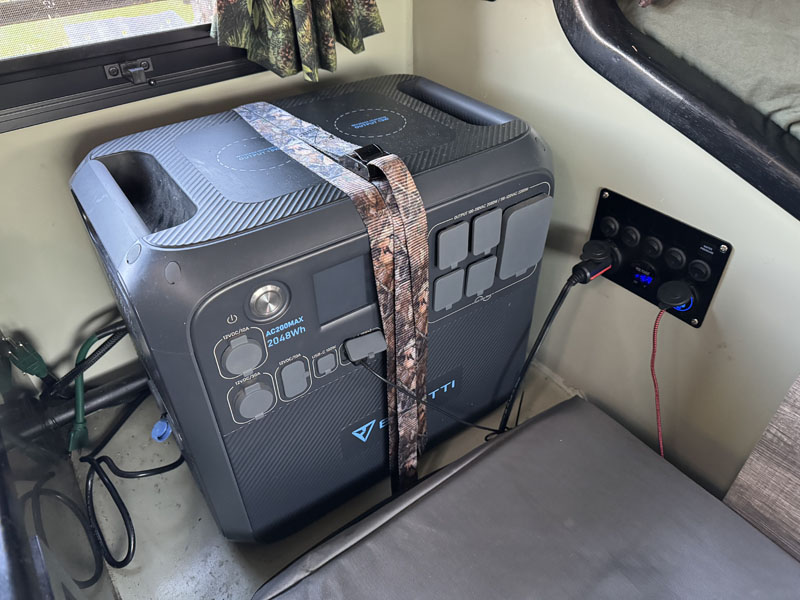
For power, we have two 200-watt solar panels on the roof, a solar charger that feeds a Bluetti solar generator, and two 100 Ah lithium iron phosphate batteries. I installed 110-volt shore power and a 2000-watt inverter. We have the option to be totally off-grid, as well as the option to hook up to power.
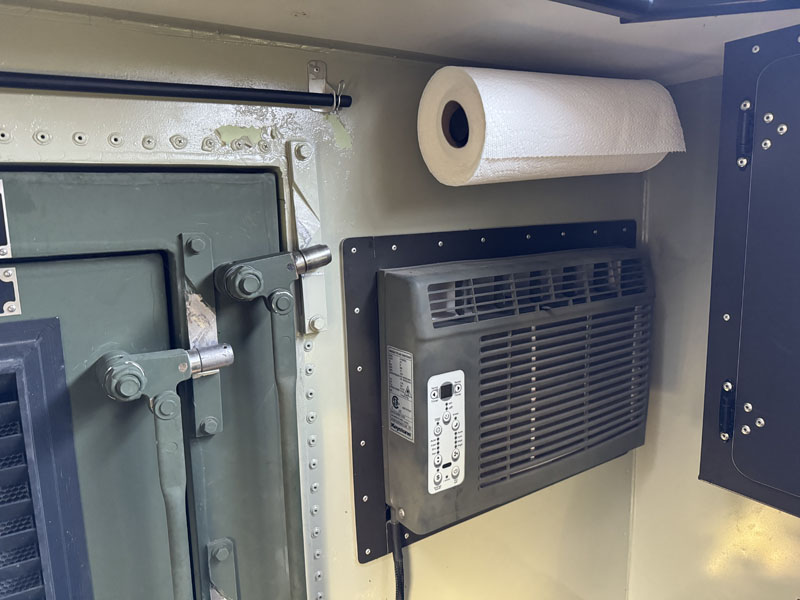
We have a 5,000 BTU air conditioner. We have run the air conditioner for seven hours in 92 degree weather. I also installed an Iceco 68-quart refrigerator and freezer that can run off solar or shore power. I have a portable composting toilet that stores easily in one of the cubbies under the couch/bed area.
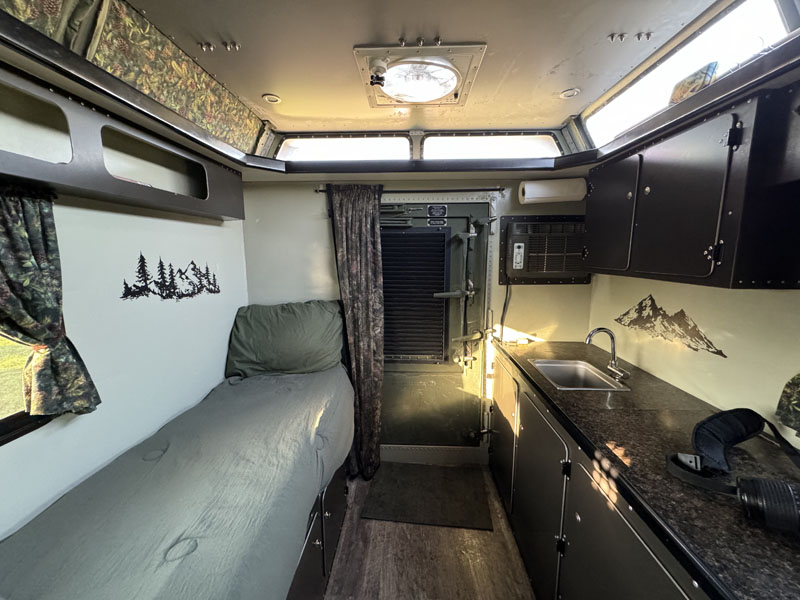
My wife sewed custom curtains for the windows blackout shades for the tropical roof windows (for the summer nights in Alaska) and a custom bug screen for the back door. She also sewed much of the custom memory foam bedding. On the exterior, I installed an outdoor shower that runs on a propane tank.
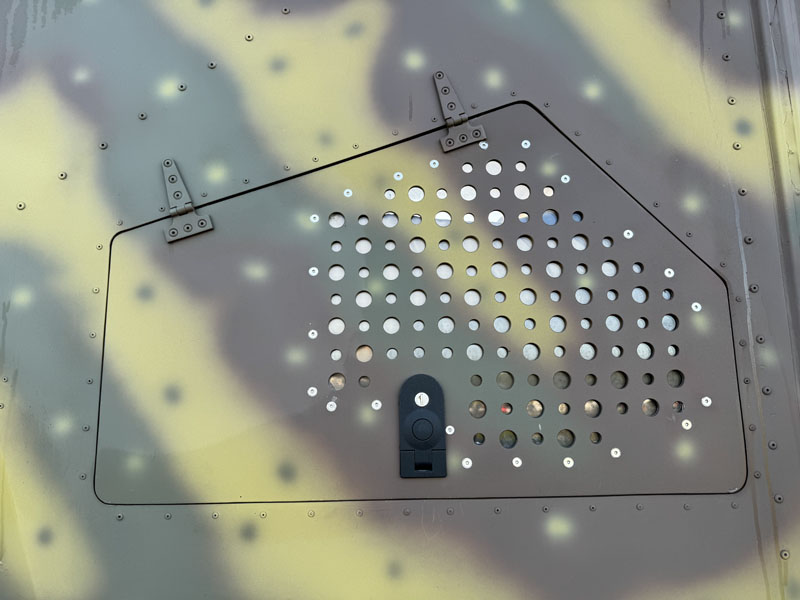
How did you paint the parts you added to match the original shelter?
I chose to give it a custom camouflage paint job.
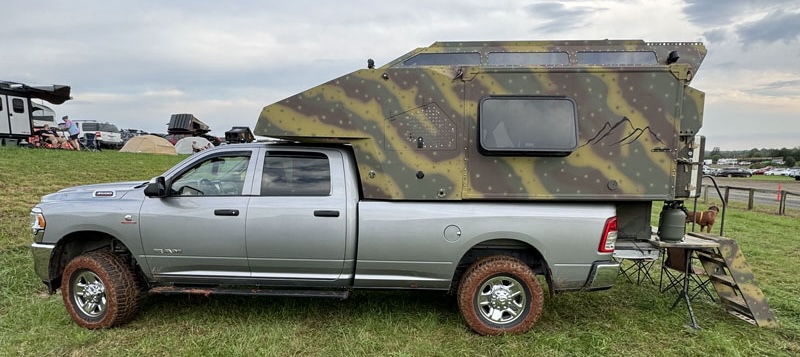
Your camper is fitted to your truck. Was this done on purpose?
The original S-250 was designed to fit in the bed of a Hummer or military trailer. I made small modifications to safely fit in my Ram 3500 truck with a long bed. It should also fit other similar trucks.
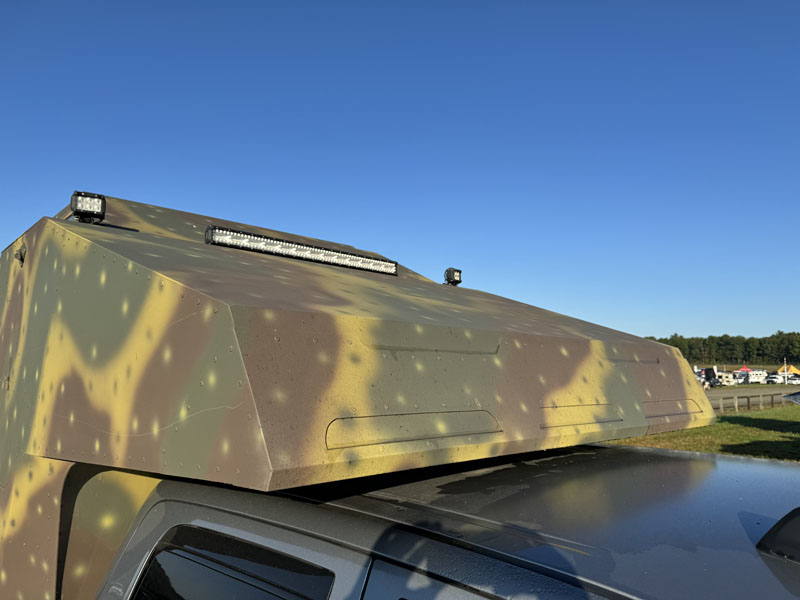
How do you get your camper on and off of your truck?
I have removable camper jacks that I can install to get the camper on and off the truck.
Do you know the weight of your camper?
The dry weight of the camper is about 1200 pounds with all the equipment on board.
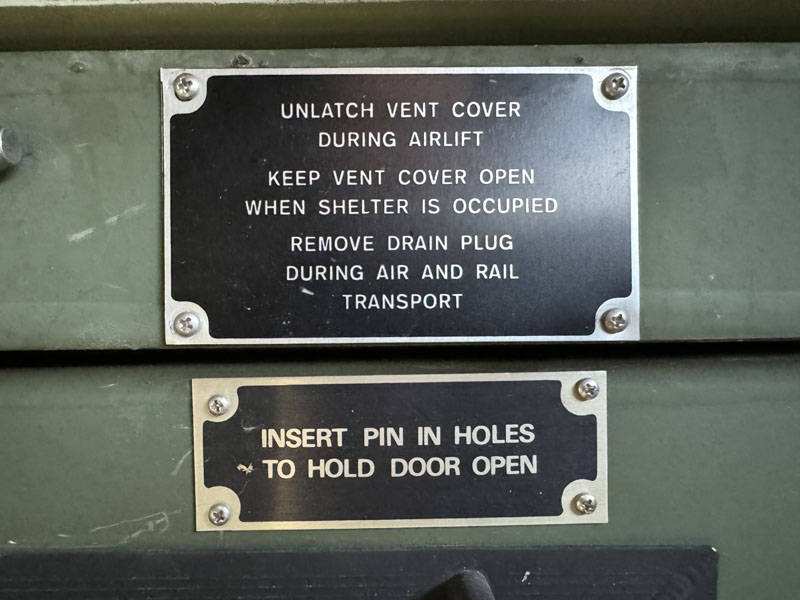
What challenges did you have along the way?
The heat in the south made it difficult to construct. It was easier when I installed the air conditioner and used it while I built out the interior. Overall, the build took me approximately four months.
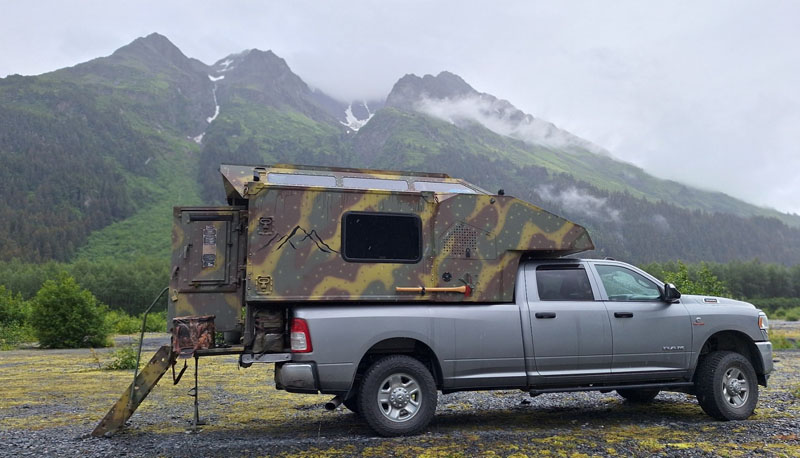
How have others reacted to seeing your rig on the road?
Oh my gosh, I get stopped all the time. People want to take pictures of it everywhere we go—all throughout the United States, Canada, and Alaska. They asked questions about it at every stop we made.
Young and old are interested in it. My wife is a bit shy, so she’s a bit uncomfortable with all the attention. Eventually, she humorously called me a “Superstar,” and we had a lot of laughs about all the attention.
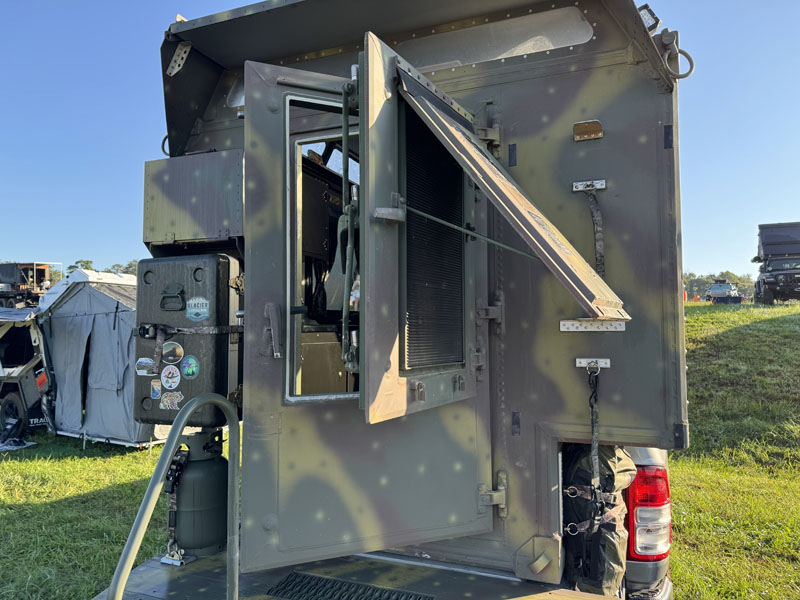
Now that your camper is completed, what do you want to do with it?
I built out the S-250 for our amazing cross-country, cross-Canada, cross-Alaska trip. It was a fun build for me because I was able to utilize the myriad skills I have acquired over my lifetime. It was like a hobby project that perfectly met all our needs for our trip.
For years, we have been camping in our travel trailer, which my wife prefers because she is more of a glamper than an overlander. Though I would love to plan other trips in the S-250, my wife prefers our travel trailer for the additional space and glamping experience. Therefore, I am considering selling to the right buyer, so if anyone is interested, let me know. I have even thought about building an additional S-250 hobby project because it was so much fun to see the finished project.
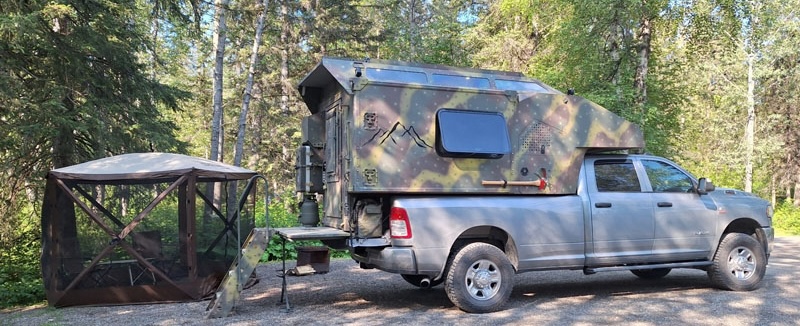
Is there anything else that you’d like to share?
It is a one-of-a-kind camper. The door, the lifting rings, and the insulated core construction with the military-style rivets are not typical truck camper features.
This was the absolute perfect set-up for the wilds of Alaska. We took it everywhere. We camped on beaches, on glaciers, on mountain tops, in river beds, and in dense forests. We spent more time off-road than we did on the road.
With the set-up, we have a 2,700 mile range per tank full of diesel. We could literally go anywhere with ease. This camper afforded us the trip of a lifetime!
If you have any questions about the build, Tom is open to answering them. Contact us, and we’ll forward your note to him.
